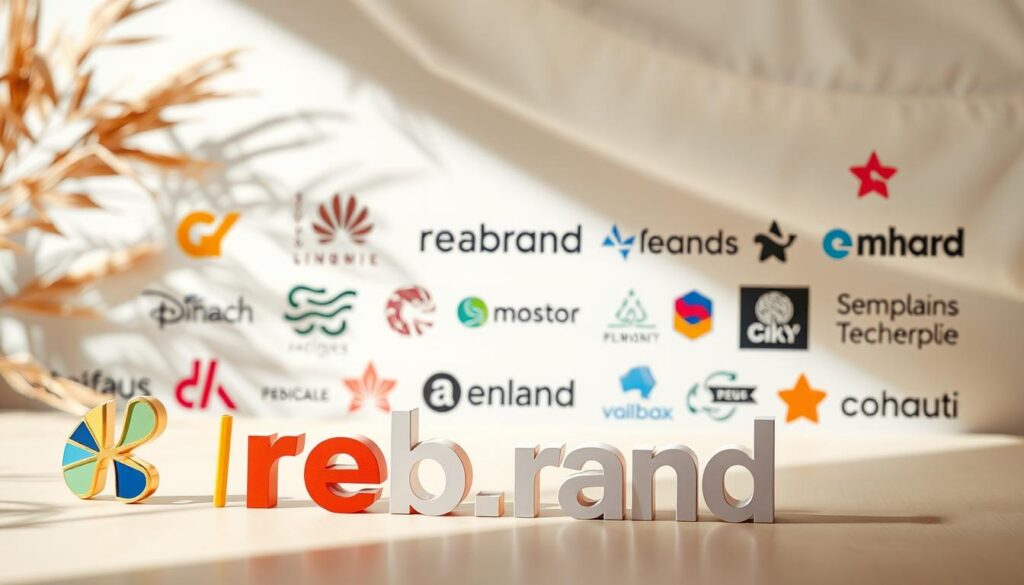The Psychology of Colours in Branding and Web Design

Table of Content
“Colours, like features, follow the changes of the emotions,” Pablo Picasso once observed. This profound insight captures why colour psychology matters so much in today’s digital landscape.
We’re diving deep into how strategic colour choices shape consumer perceptions. It’s not just about aesthetics – it’s about creating emotional connections that drive business outcomes.
Australian companies face unique challenges in standing out. Understanding local colour preferences can make or break your marketing efforts.
This guide reveals how colours influence purchasing decisions. We’ll show you how to leverage this knowledge across your digital presence.
Your colour choices communicate values before a single word is read. They establish immediate emotional responses that either build trust or create distance.
We’ll explore practical applications for web design and brand identity. Get ready to transform how you approach colour in your business strategy.
Key Takeaways
- Colour choices directly influence customer emotions and behaviours
- Strategic colour selection builds stronger brand recognition
- Different colours trigger specific psychological responses
- Australian audiences respond uniquely to colour schemes
- Consistent colour application strengthens brand identity
- Colour psychology impacts conversion rates and trust levels
- Effective colour strategy aligns with company values and mission
Introduction: Why Colour Choices Define Your Brand
Before customers read your message, they feel your colours. This immediate emotional response forms the foundation of how people perceive your business.
We see companies not selling products but experiences and feelings. Strategic colour application becomes the silent language of your organisation’s values.
More Than Just Aesthetics: The Power of Perception
Colours create psychological impressions within seconds. They shape customer perceptions before any words are processed.
Successful brands understand this power completely. They use colour strategically to craft specific emotional experiences.
Consider how consistent colour application builds recognition. It creates cohesive experiences across all customer touchpoints.
Your choices either align with or contradict stated values. This directly impacts trust levels and customer loyalty.
What You’ll Learn in This Ultimate Guide
We’ll explain why colour fundamentals extend beyond visual appeal. Discover how it becomes a strategic tool rather than decoration.
Understand the immediate psychological impact on first impressions. Learn how it influences purchasing decisions over time.
Explore why colour remains among the most powerful recognition tools. See how it works in competitive Australian markets.
We’ll demonstrate alignment with mission and values. Discover practical applications for your marketing strategy.
This knowledge transforms how you approach business identity. It turns colour selection from decorative to strategic.
What is Branding? It’s More Than Just a Logo
Many business owners mistakenly believe their company identity is simply their logo and colour scheme. This common misconception overlooks the true depth of what creates a memorable organisation.
Your business identity represents the complete experience people have when interacting with your company. It’s present in every touchpoint from social media to product packaging.
This identity development involves researching and applying distinctive features to your organisation. Consumers then associate these elements with your products or services.
Branding vs. Marketing: Understanding the Key Difference
People often combine these two disciplines into one, but they’re quite distinct. Your identity represents who you are as a company.
Marketing includes the tactics and strategies that communicate this vision. It’s how you share your story with potential customers.
Think of your identity as your foundation and marketing as the building process. One defines your essence while the other promotes it to consumers.
How Your Brand Shapes Customer Experience and Loyalty
Strong business identity creates emotional connections at every interaction point. These connections directly influence purchasing decisions and drive loyalty.
When consumers trust your organisation, they’re 71% more likely to choose your products. This trust comes from consistent experiences across all media.
Your identity makes your business memorable and helps people distinguish you from competitors. It supports marketing efforts by adding recognition to promotional activities.
Effective identity development also builds employee pride and creates a reputable workplace. This attracts strong talent who believe in your company’s mission.
Remember that this is an iterative process requiring deep understanding of both your customers and your business. It’s not a one-time project but an ongoing commitment.
The Core Principles of Colour Psychology
Colour psychology operates at both conscious and subconscious levels. It influences consumer behaviour in ways people may not realise.
We’ll explore the scientific basis behind these emotional triggers. Understanding these mechanisms helps create more effective marketing strategies.
How Colours Trigger Emotional and Psychological Responses
Different colours activate specific neurological pathways in our brains. These pathways directly influence decision-making processes.
Red increases heart rate and creates urgency. Blue promotes calmness and builds trust. These responses occur within milliseconds of exposure.
Certain colours consistently evoke specific emotions across demographics. This universality makes colour a powerful business tool.
Your colour choices become part of your company’s voice. They communicate values before any words are processed.
Cultural and Contextual Influences on Colour Perception
Cultural background significantly influences colour interpretation. The same hue can mean different things across global markets.
Context dramatically alters colour perception. A colour in product packaging might convey different meaning in advertising media.
Testing colour perceptions with your specific audience is crucial. Never rely solely on general assumptions about colour meanings.
Australian consumers respond uniquely to colour schemes. Local cultural references shape how people interpret your design choices.
Colour combinations create different psychological effects than single hues. Understanding these frameworks helps build stronger brand identity.
Your organisation’s story should guide colour selection. Align choices with your mission and values for authentic representation.
Decoding the Meaning Behind Common Brand Colours
Behind every successful brand lies a carefully chosen colour narrative. These hues work silently yet powerfully across all customer touchpoints.
We’ll explore how specific colours trigger psychological responses that influence consumer behaviour. This knowledge helps shape more effective marketing strategies.
Red: Energy, Passion, and Urgency
Red creates immediate excitement and demands attention. It increases heart rates and creates sense of urgency in marketing contexts.
This colour works brilliantly for clearance sales or limited-time offers. It stimulates appetite, making it popular in food industry branding.
Use red strategically to highlight important calls-to-action. But be cautious – too much red can feel aggressive or overwhelming.
Blue: Trust, Security, and Calm
Blue consistently ranks as most trusted colour across demographics. It promotes feelings of security and reliability in business communications.
Financial institutions and tech companies favour blue for its calming effect. It suggests stability and professionalism to potential customers.
Darker blues convey strength and confidence. Lighter shades feel more approachable and friendly.
Yellow: Optimism, Clarity, and Warmth
Yellow radiates positivity and mental clarity. It captures attention while conveying warmth and accessibility.
This colour works well for brands wanting to appear friendly and affordable. But requires careful application to avoid negative associations.
Too much yellow can feel overwhelming. Balance it with neutral tones for best results.
Green: Growth, Health, and Sustainability
Green naturally connects to nature, growth, and renewal. It’s the obvious choice for eco-friendly and health-focused organisations.
This colour suggests environmental responsibility and fresh beginnings. Different shades convey various messages – olive for natural, emerald for luxury.
Green works particularly well in product packaging for organic items. It visually communicates quality and sustainable values.
Black: Luxury, Sophistication, and Power
Black represents elegance and exclusivity across industries. It creates perception of premium quality and sophistication.
Luxury brands use black to communicate value and timeless style. It suggests authority and confidence in business identity.
Pair black with metallic accents for ultra-luxury effect. Or use it sparingly for dramatic contrast in design elements.
White: Simplicity, Purity, and Cleanliness
White creates feeling of simplicity and space. It suggests purity and cleanliness, especially in healthcare sectors.
Tech companies use white to convey innovation and minimalism. It provides perfect backdrop for other colours to stand out.
White space in design helps content breathe and improves readability. It makes messaging feel clear and uncluttered.
Colour meanings evolve across cultures and time periods. What works today might need adjustment in five years.
Test colour perceptions with your specific Australian audience. Local preferences can significantly impact your marketing success.
Your colour strategy should align with company values and mission. This creates authentic connection with your target customers.
How Colour Psychology Influences Consumer Behaviour
Colour psychology operates as a silent persuader in consumer decision-making processes. It shapes purchasing behaviour through emotional triggers that work beneath conscious awareness.
We see this influence across Australian retail and digital environments. Strategic colour application directly impacts how people perceive value and make choices.
Driving Purchasing Decisions and Building Brand Recognition
Colour choices create specific emotional states that guide consumer actions. These psychological responses occur within milliseconds of exposure.
Consistent colour application across touchpoints significantly increases recognition. This visual consistency helps customers identify your products instantly.
Neurological research shows colour affects decision-making processes directly. Certain hues can increase purchase intent by up to 80% in tested environments.
Your colour strategy should align with business objectives and target audience preferences. This alignment creates cohesive experiences that drive conversions.
The Role of Colour in Brand Trust and Value Perception
Colour plays a crucial role in establishing and maintaining trust with consumers. This is particularly important in competitive Australian markets.
Research shows 71% of consumers prefer buying from companies they trust. Colour serves as a key factor in establishing that initial trust.
Certain colours can make products appear more premium or affordable. This perceived value directly influences purchasing decisions and loyalty.
Colour consistency across digital and physical media builds cohesive experiences. This consistency reinforces your company’s values and mission.
Our surveys indicate purchases are influenced by brands with shared values. Colour communicates these values before any words are read.
Effective colour application can improve conversion rates and marketing effectiveness. It creates emotional connections that influence long-term customer relationships.
Building Your Brand’s Strategic Colour Palette
Strategic colour selection transforms from artistic choice to business imperative. Your palette becomes the visual language that communicates your company’s essence across all touchpoints.
We’ll guide you through creating a system that reflects your mission while resonating with your Australian audience. This framework ensures consistency while allowing flexibility for growth.

Aligning Colours with Your Mission, Values, and Target Audience
Your mission serves as the North Star for all business decisions. It should feature prominently in your business plan and guidelines.
Your identity development must pinpoint core values that remain non-negotiable during growth. These values maintain strength even as products or logo evolve.
Researching audience preferences forms the foundation of effective palette selection. Australian consumers respond uniquely to colour combinations.
We recommend surveying your specific demographic before finalising choices. Local cultural references significantly influence colour perception.
Selecting Primary, Secondary, and Accent Colours
Primary colours form the foundation of your visual identity. They appear most frequently across marketing materials and media.
Secondary colours support and complement your primary choices. They provide flexibility for different applications and contexts.
Accent colours add visual interest and highlight important elements. They create emphasis in advertising and product packaging.
Each colour category serves distinct purposes within your overall strategy. Understanding these differences ensures cohesive application.
Your palette must work across digital and print media while maintaining consistency. We’ll show you how to achieve this balance.
Testing colour combinations with real customers provides invaluable feedback. This process helps identify potential issues before implementation.
Document your complete colour system in brand guidelines for all employees. This ensures consistent application as your organisation grows.
Balance current trends with timeless choices that serve long-term goals. Your strategy should accommodate new marketing channels and products.
Practical tools and resources help develop professional palettes efficiently. We’ll share our preferred methods for creating harmonious combinations.
Remember that effective colour systems scale with business growth. They adapt to new contexts while maintaining core identity.
Applying Your Colour Palette to Your Website Design
Your website serves as the digital front door to your business. Half of all internet users judge companies based on their website’s appearance.
We help translate your carefully crafted colour strategy into effective digital experiences. This process ensures every pixel communicates your company’s essence.
Strict adherence to your brand guidelines creates cohesive user journeys. Deviating from established colours creates confusing experiences for visitors.
Your website represents a major part of your overall identity. It must reflect your values through consistent colour application.
Creating a Cohesive and Psychologically-Engaging User Experience
Strategic colour use guides visitors through your content intuitively. It creates visual pathways that feel natural and engaging.
We implement colour systems that trigger desired emotional responses. These psychological cues work beneath conscious awareness.
Consistency across all pages maintains trust and recognition. Users should feel they’re interacting with one unified organisation.
Colour accessibility ensures people with visual impairments can use your site effectively. This expands your potential customer base significantly.
Using Colour in CTAs, Navigation, and Key Messaging
Calls-to-action benefit tremendously from strategic colour choices. The right hues can increase conversion rates by making buttons stand out.
Navigation systems become more intuitive with colour coding. Users find information faster when colours create clear visual hierarchies.
Key messaging gains impact through thoughtful colour application. Important content attracts attention when framed with contrasting colours.
We recommend A/B testing different colour combinations. User feedback helps optimise website performance over time.
Struggling with Your Website Customisation? Get Expert Help
Many businesses face technical challenges implementing colour systems. Developers sometimes struggle with accurate colour reproduction across devices.
Our team specialises in effective website customisation for Australian companies. We ensure your digital presence reflects your brand perfectly.
Contact hello@defyn.com.au for professional assistance. We’ll help translate your colour strategy into a psychologically engaging website.
Don’t let technical limitations compromise your company identity. Expert help ensures your website becomes your strongest marketing asset.
Extending Your Brand Colours Across Marketing Channels
Your carefully crafted colour palette deserves consistent application across every customer touchpoint. We help businesses translate their visual identity into cohesive experiences that build recognition and trust.
Research shows colour consistency increases brand recognition by up to 80%. This visual coherence creates stronger emotional connections with your audience.
Each platform requires thoughtful adaptation while maintaining core identity. Let’s explore practical strategies for major marketing channels.
Social Media: Building a Recognisable and Scroll-Stopping Presence
Social media algorithms favour content that generates immediate engagement. Strategic colour choices can significantly impact your reach and visibility.
Use your primary brand colours consistently across profile elements. Your logo should feature prominently as your profile picture for instant recognition.
Create templates using your colour palette for regular content. This visual consistency helps people identify your posts before reading captions.
Different platforms have unique colour psychology tendencies. Instagram favours bright, vibrant hues while LinkedIn responds better to professional tones.
Packaging and Physical Products: The Silent Salesman
Product packaging serves as your silent salesperson in retail environments. Colour choices directly influence purchase decisions at point of sale.
Australian consumers make subconscious judgments based on packaging colours. These choices communicate quality, value and brand values instantly.
Consider how your packaging colours work in competitive retail settings. They should stand out while maintaining alignment with your overall identity.
The tactile experience matters as much as visual appearance. Colour consistency across packaging materials builds premium perception.
Advertising and Content: Reinforcing Your Brand Identity
Advertising campaigns benefit tremendously from colour consistency. Immediate brand recognition happens when colours trigger emotional connections.
Use your accent colours strategically in calls-to-action. They create visual emphasis that guides audience attention effectively.
Content marketing materials should reflect your complete colour system. This includes whitepapers, case studies and digital resources.
Scroll-stopping advertising uses contrasting colours within your palette. This creates visual interest while maintaining brand consistency.
| Marketing Channel | Colour Application Strategy | Psychological Impact |
|---|---|---|
| Social Media | Profile consistency + platform-specific adaptations | Instant recognition + increased engagement |
| Product Packaging | Standout colours + tactile experience | Quality perception + purchase influence |
| Advertising Campaigns | Accent colours + strategic contrast | Emotional connection + brand recall |
| Content Marketing | Full palette implementation | Trust building + value communication |
Develop comprehensive guidelines covering all channel applications. Include specific colour codes and usage examples for your team.
Regular audits ensure consistency across all marketing materials. This maintains brand equity and makes your efforts more effective over time.
Remember that colour consistency builds customer trust and loyalty. It transforms individual interactions into cohesive brand experiences.
Australian Brand Examples: Colour Psychology in Action
Global giants show us the power of colour psychology. But Australian companies prove you don’t need massive budgets to create memorable identities.
We’ll explore how local businesses use colour strategically. Their success stories offer practical lessons for Australian organisations.

These examples demonstrate effective colour implementation. They show how hues connect with local values and preferences.
Analysing Successful Local Brands and Their Strategic Colour Use
Australia’s iconic brands understand colour psychology deeply. They’ve built recognition through thoughtful colour choices.
Let’s examine specific case studies from various industries. Each shows unique approaches to colour strategy.
Qantas: Flying High with Red and White
Qantas uses red to convey energy and national pride. Their white background suggests safety and reliability.
This combination works perfectly for an airline. It balances excitement with trust in equal measure.
Woolworths: Fresh Greens for Fresh Food
Woolworths’ green palette communicates freshness and quality. It aligns perfectly with their food-focused business.
Their green choice reflects Australian values around fresh produce. It creates immediate association with nature and health.
ANZ Banking: Blue for Trust and Stability
ANZ uses blue to build confidence in financial services. This colour choice suggests security and professionalism.
Their consistent blue application across all media reinforces trust. Customers feel assured about their financial decisions.
“Our colours represent our commitment to reliability and innovation in serving Australian communities.”
Key Takeaways from Their Approach
These successful brands share common strategies. Their approaches offer valuable lessons for other businesses.
Cultural Connection Matters
Each brand connects colours to Australian values. They understand local cultural references and preferences.
This cultural alignment builds stronger emotional connections. It makes their identity feel authentically Australian.
Consistency Across Touchpoints
All maintain strict colour consistency across media. Their packaging, advertising, and digital presence align perfectly.
This consistency builds recognition and trust over time. Customers know what to expect from these organisations.
Strategic Evolution
Successful brands adapt their colour strategies when needed. They evolve while maintaining core identity elements.
This flexibility allows growth without losing recognition. It balances consistency with necessary change.
| Brand | Primary Colours | Psychological Impact | Industry Application |
|---|---|---|---|
| Qantas | Red, White | Energy, Trust | Aviation |
| Woolworths | Green, White | Freshness, Quality | Retail |
| ANZ Banking | Blue, White | Trust, Stability | Financial Services |
| Australia Post | Red, Yellow | Visibility, Reliability | Postal Services |
| Telstra | Various Blues | Innovation, Connection | Telecommunications |
These examples show colour psychology working in real Australian contexts. Each brand demonstrates strategic thinking about their visual identity.
Their success comes from understanding both colour theory and local market conditions. They’ve created identities that resonate deeply with Australian consumers.
You can apply these lessons to your own business strategy. Start by researching how colours connect with your target audience’s values.
Maintaining and Evolving Your Brand’s Visual Identity
Your visual identity should grow alongside your business, not remain static in a changing market. We help Australian companies develop systems that maintain consistency while allowing strategic evolution.
Consistency doesn’t mean stagnation. As Becca from Fishwife observes, “It makes it so much more interesting and fun to allow the brand to be the living, breathing creature that it really is.” This approach keeps your identity fresh while maintaining core recognition.
Ensuring Consistency Across All Touchpoints
We implement systematic processes for colour management across all customer interactions. This includes digital platforms, physical products, and advertising materials.
Create comprehensive guidelines that every team member can follow easily. These documents should cover colour codes, usage examples, and application rules.
Regular audits help maintain quality across all media. We recommend quarterly checks of all marketing materials and product packaging.
Use colour management systems to ensure accurate reproduction. This maintains integrity across different printing methods and screen displays.
When and How to Refresh Your Palette as You Grow
Recognise when your current colours no longer reflect company values or market position. This often happens during significant business growth or market shifts.
Implement changes gradually to maintain customer recognition. Start with secondary colours before touching primary elements.
Communicate updates clearly to all employees and partners. Provide training sessions and updated guideline documents.
Test new colour combinations with your target audience first. Australian consumers may respond differently to changes than other markets.
| Consistency Method | Implementation Frequency | Responsible Team | Quality Metrics |
|---|---|---|---|
| Colour Audits | Quarterly | Marketing & Design | Deviation Percentage |
| Guideline Updates | Bi-annually | Brand Management | Employee Compliance |
| Supplier Colour Checks | Per Project | Production Team | Colour Match Accuracy |
| Digital Colour Monitoring | Continuous | IT Department | Hex Code Consistency |
Balance tradition with innovation in your approach. Keep core elements consistent while allowing creative expression within established boundaries.
Document everything clearly for smooth team transitions. New employees should understand your colour strategy immediately.
Your visual identity represents your company’s story to consumers. Protect it while allowing natural evolution over time.
Putting It All Together: Your Action Plan
Transforming colour theory into practical business results requires a structured approach. We’ve created a comprehensive framework to guide your implementation journey.
This action plan turns psychological insights into measurable outcomes. It ensures your colour choices deliver real business value.
A Step-by-Step Process to Define and Implement Your Colour Strategy
Start with thorough audience research specific to your market. Australian consumers often respond differently than international audiences.
Analyse your company’s core values and mission statement. Your colours must authentically represent what your business stands for.
Develop a primary palette that reflects your organisation’s essence. Choose secondary colours that provide flexibility across different media.
Create comprehensive guidelines documenting every aspect. Include specific colour codes and usage examples for all team members.
Implement your strategy across all customer touchpoints simultaneously. This creates immediate consistency in your business identity.
Establish clear metrics to measure effectiveness from day one. Track recognition, engagement, and conversion changes.
Common Pitfalls to Avoid
Many businesses make colour choices based on personal preference rather than strategy. This often leads to mismatched emotional responses.
Avoid changing colours too frequently as this confuses customers. Consistency builds recognition over time.
Don’t underestimate cultural differences in colour perception. What works overseas might not resonate with Australian consumers.
Ensure your colour strategy integrates with other brand elements. Your logo, voice, and story should work together harmoniously.
Allocate sufficient resources for proper implementation. Colour strategy affects every part of your marketing efforts.
Train all employees on colour guidelines and their importance. Consistent application requires everyone’s understanding.
“The most successful colour strategies evolve through continuous feedback and market adaptation.”
Create feedback loops to monitor customer responses. Use this data to refine your approach over time.
Remember that effective colour strategy is an iterative process. It requires regular review and adjustment as your business grows.
Your colours become part of your company’s visual identity. They communicate values before any words are read.
With this action plan, you’re equipped to implement colour psychology strategically. The results will speak for themselves through improved business outcomes.
Conclusion: Harnessing Colour for Future Brand Success
Your colour choices create lasting impressions that shape how people view your company. They become part of your business identity and story.
Strategic colour application builds recognition across all media. It connects with customers emotionally before they read your message.
This process strengthens your marketing efforts over time. Consistent colours make your products stand out in crowded markets.
Your organisation’s values shine through thoughtful design choices. They communicate your mission to consumers and employees alike.
We’ve shown how colour psychology drives business success. Now it’s time to apply these insights to your strategy.
Start with one change today and watch your brand grow stronger. Your future success begins with the colours you choose now.










